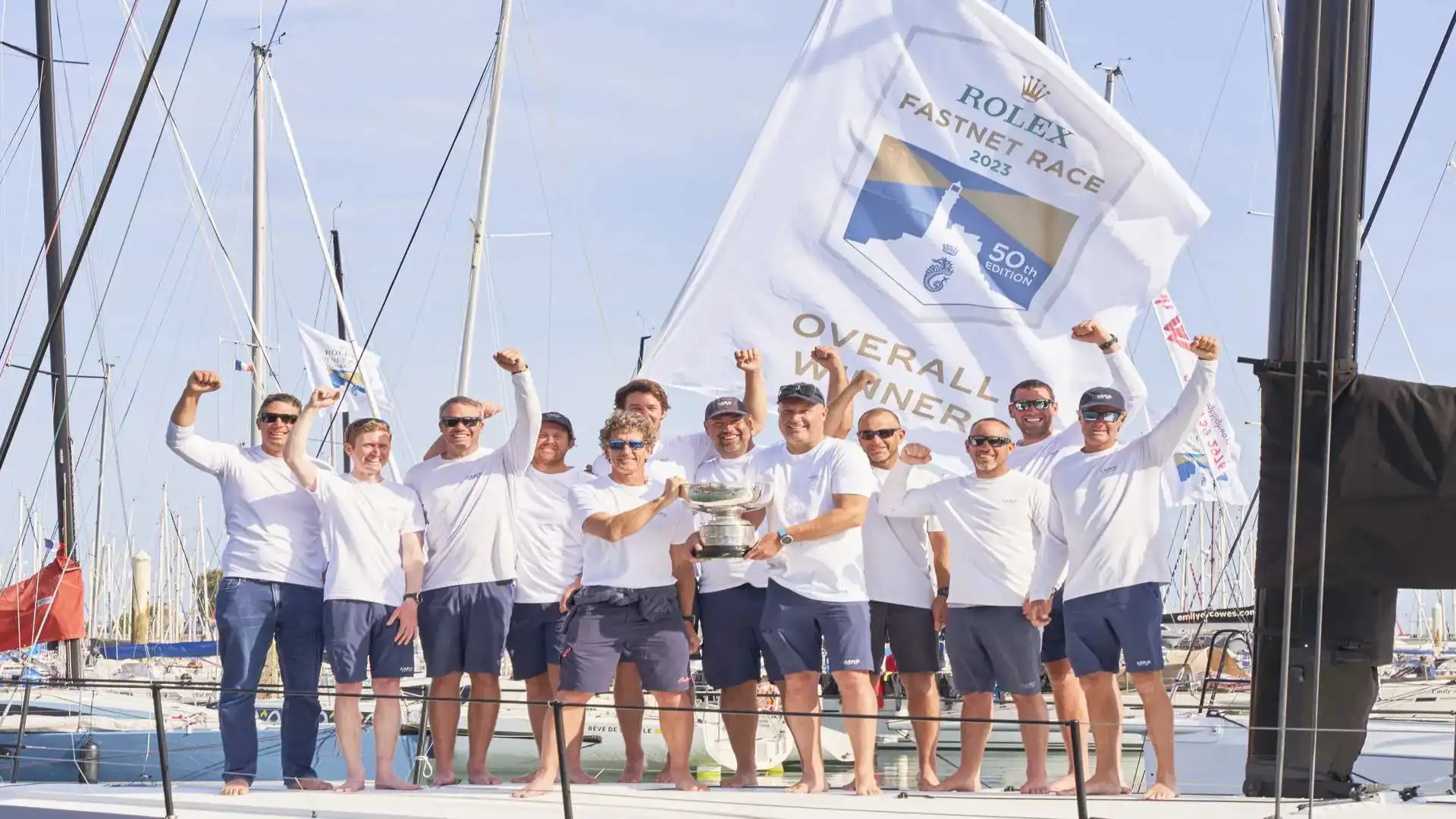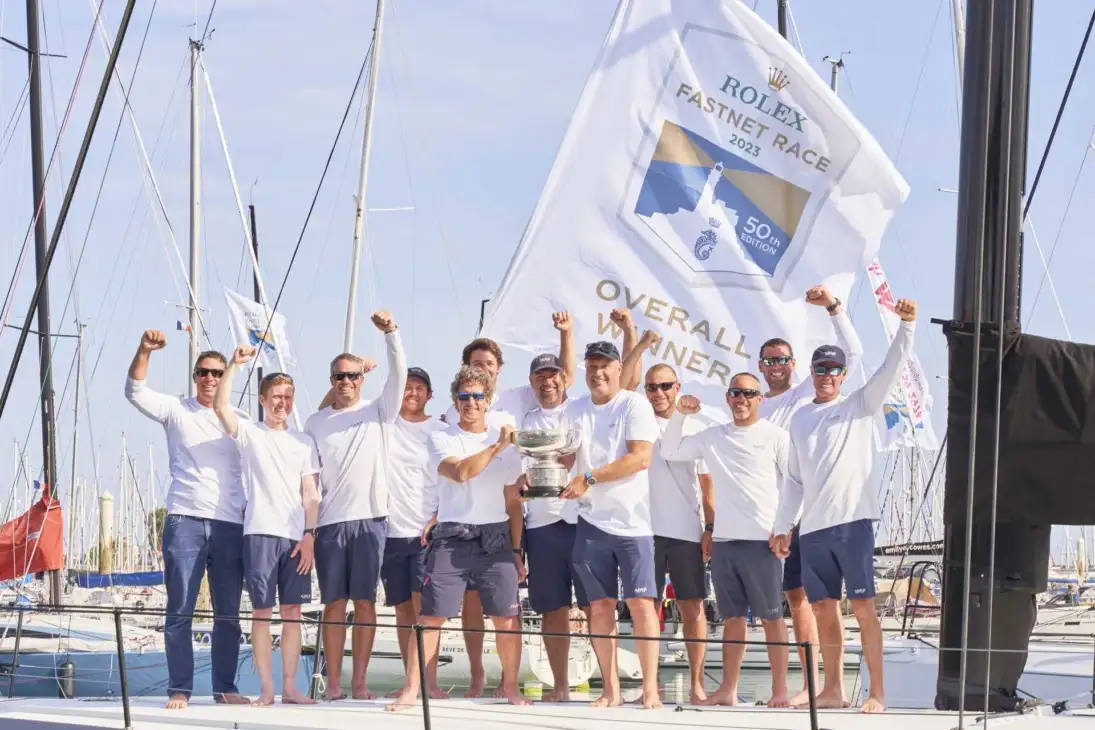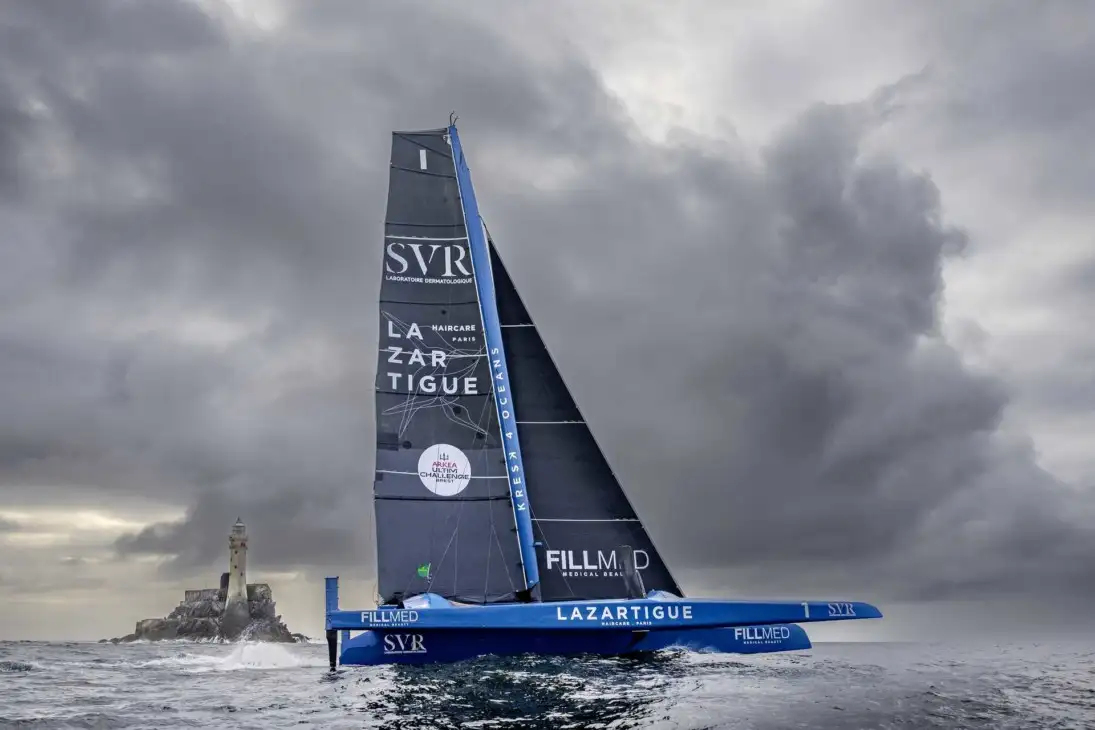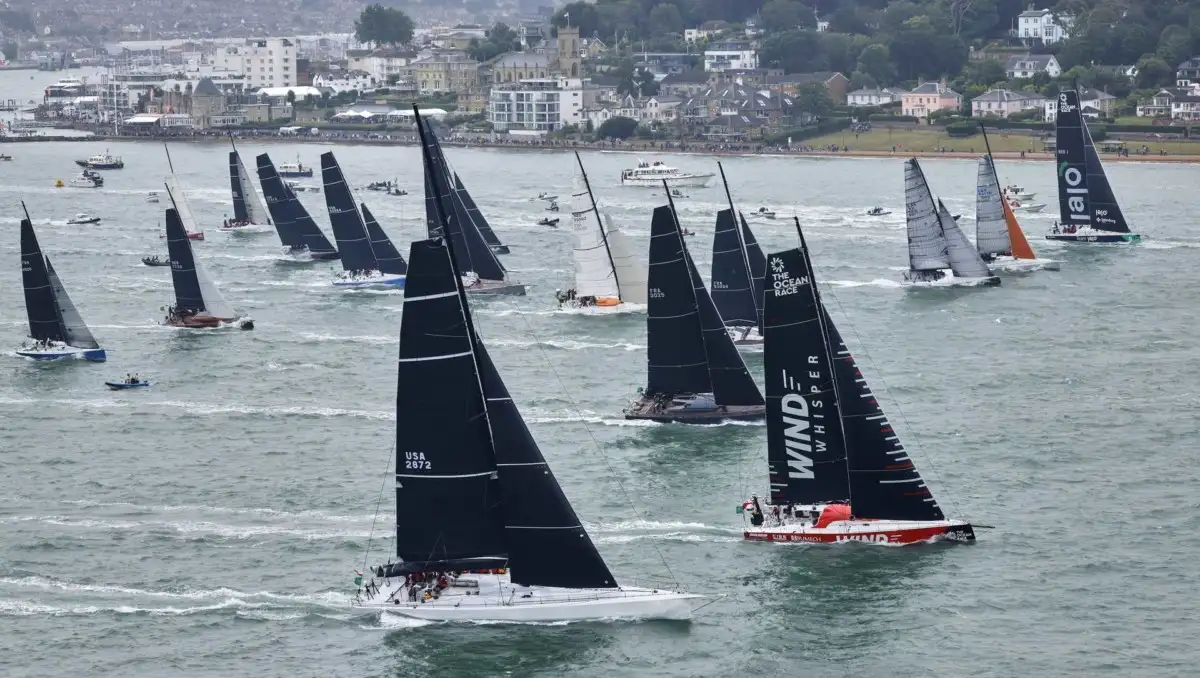
The 52 Caro Button by Max Klink wins the 50 Rolex Fastnet Race
The 52 Caro Button by Max Klink wins the 50 Rolex Fastnet Race

The design Botín 52 Caro, of the German shipowner Max Klink, was proclaimed the absolute winner of the 50 Rolex Fastnet Race, the largest edition in the history of this legendary ocean race of 695 nautical miles that began on the British island of Wight and ended in the French port of Cherburg
The Fastnet Challenge Cup is awarded to the absolute winner of the Rolex Fastnet Race in compensated time. Success depends on having the skills and ability to compete to the maximum potential of the ship, whatever conditions the crew find along the course. In a 695 nautical mile race, luck plays an important role, as the wind does not blow evenly and the behavior of the sea is not always predictable. Maintaining concentration and commitment throughout the race requires passion, faith and determination.
Caro completed the tour with a compensated time of three days, 19 hours, 22 minutes and 29 seconds, unbeatable by any of the ships that continue to advance towards the goal. The Swiss team joins an illustrious list of ships that have won this race held for the first time in 1925 and sponsored by Rolex since 2001 as part of a relationship with the sailing world that goes back more than six decades.
2023-07-25: 142 retired in a record edition at the Rolex Fastnet Race

The IMOCA 60 Macif, patronized by French Charlie Dalin, was declared a real-time winner of the 50 Rolex Fastnet Race in a monocasque category after completing the 695 nautical miles tour in two days, seven hours, 16 minutes and 26 seconds... among the multicascos, the fastest was the colossal will be the SVR Lazartigue of François Gabart, which completed the race in just over 32 and a half hours... both winners exceeded the best times of the previous edition.
The battle for real-time victory in the 50th edition of the Rolex Fastnet Race in monocasque category was resolved among the very fast IMOCA 60. The 27-meter American Lucky, which was on board with the candid bow Antonio Ñeti Cuervas- Mons, was the first to surround the Fastnet Rock, but remained 15 minutes to counter the performance of the ships with fils after an exciting final stretch, and could only be third. The first to cross the goal in the French town of Cherburg was the Macif of Charlie Dalin, which was imposed in an intense duel with the also IMOCA Paprec Arkea of Yoann Richomme, to which it took just four minutes.
Macif stopped the crone at the end of the 695 nautical miles of tour in two days, seven hours, 16 minutes and 26 seconds, improving in an hour and 17 minutes the brand established in the previous edition by the ClubSwan 125 Skorpios of the Spanish pattern Fernando Echávarri. This is the second time in France this legendary ocean race created in 1925 and sponsored by Rolex since 2001 as part of a relationship with the sailing world that dates back more than six decades.
Almost a day before the arrival of the first monocasco, the duel between the two colossal flying trimarans Ultimate 32 was resolved, leading the fleet of 22 multicascos of this historic edition. François Gabart's SVR Lazartigue ended in 32 hours, 38 minutes and 27 seconds, beating the previous record for just over 36 minutes and its rival Banque Populaire for almost an hour. Once again, the huge trimarans of 32 meters in length showed their impressive power and reaffirmed their hegemony in ocean navigation, crossing the goal when the best monocascos still managed the passage through the iconic Fastnet Rock, half the way.
Clear the incognite over the fastest in real time, attention now focuses on the identity of the Fastnet Challenge Cup winner who receives the absolute champion in compensated time IRC. At the time of writing this information, the best positioned is the WindWhisper of the Cantabrian pattern Pablo Arrarte, which reached Cherburg at the 23: 00 h edge with the best compensated time of the fleet. We will have to wait to see the evolution of the ships that continue in race to see if the Arrarte team proclaims final winner of the 50 Rolex Fastnet Race.
Of the 430 ships that took the exit on the island of Wight to establish a new world record of participants in an ocean race, 142 were withdrawn as a result of the severe conditions suffered in the first hours of competition.
2023-07-22: 430 ships on the Rolex Fastnet Race that ends for the second time in France

A fleet of 430 ships formed in front of the headquarters of the Royal Yacht Squadron, on the British island of Wight, to take the exit of the historic 50 edition of the Rolex Fastnet Race... a show to see, which marks a new milestone in the world ocean competition
The Royal Squadron canyon marked the departure of each of the eight classes participating in this edition that officially set a record of participants in the 98 years of the event's history and set a new brand in the exclusive race club of more than 600 nautical miles. Held for the first time in 1925 and every two years since the 1930s, the Rolex Fastnet Race was incorporated in 2001 into the Rolex-sponsored event portfolio, whose relationship with the sailing sport dates back more than six decades.
The weather conditions at the exit met the forecasts, with 20 knots of bow wind, rain and a strong current in favor. The spectacular images suggest the dimension of the challenge facing the nearly 3000 regatists participating this year.
The first to jump into the field of play were the 22 multicascos, led by the 32-meter-long Ultima colossals, the largest and fastest ships in the fleet. They were followed by no less than 29 IMOCA 60 units and other participants with exits every 15 minutes. The force of the current caused a good number of off-line, which in this edition is punished with two hours of penalty.
To beat the mark established in 2021 by the colossal Skorpios patroniado by the Spanish Fernando Echavarri, the fastest monocasco should cross the finish line in Cherburg with a time of less than 56 hours, 33 minutes and 55 seconds. The experienced Australian navigator Andrew Cape, on board the 27 meters Lucky (former Rambler 88), warned before the departure that the record could fall this year.
On the front, the participants face a 695 nautical mile tour, which from Cowes will lead them to navigate through geographical milestones such as The Needles, The Lizard or Land's End, before going out to the open sea to the Fastnet Rock, the ocean navigation icon, located on the southern coast of Ireland. This natural beacon acts as the equator of the journey before the long stage of return through the Scillies until the goal in Cherburg... will be the second time the race ends in France.
© 2024 Nautica Digital Europe - www.nauticadigital.eu











